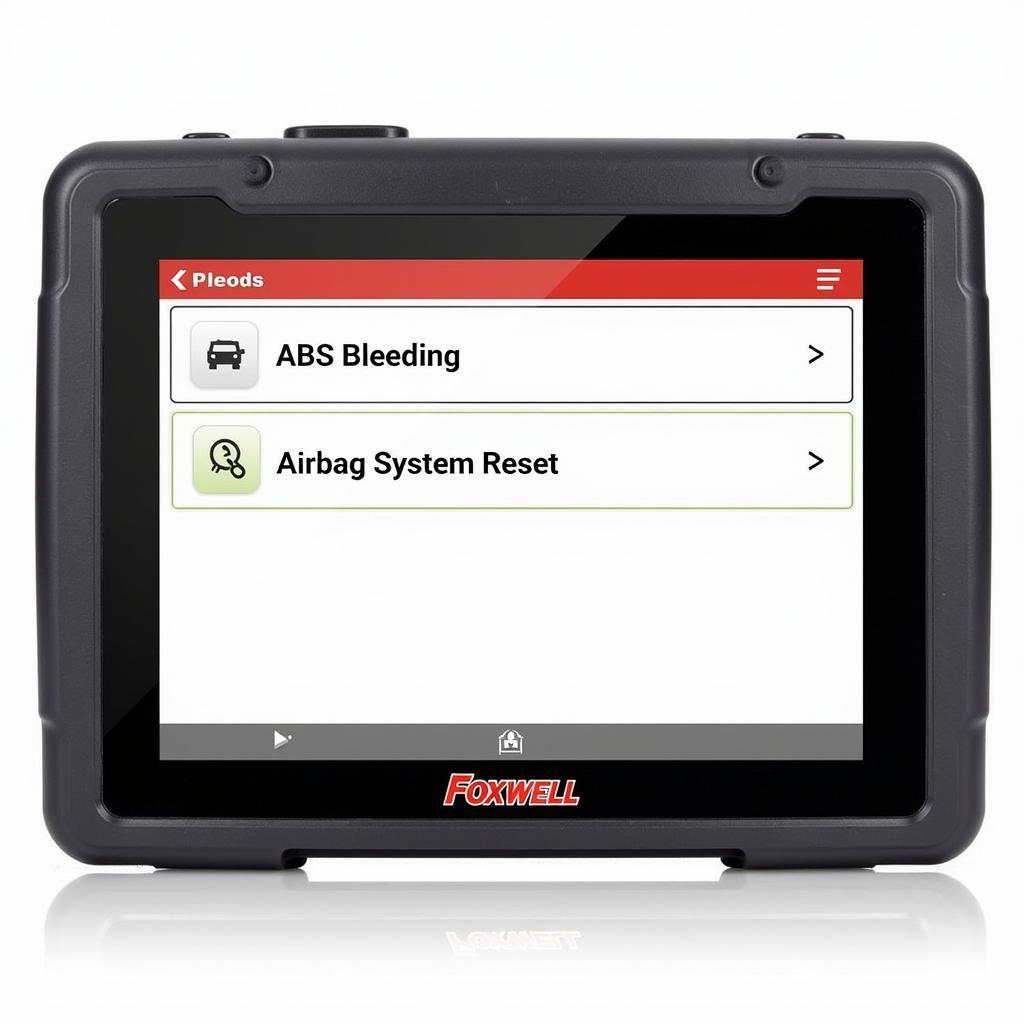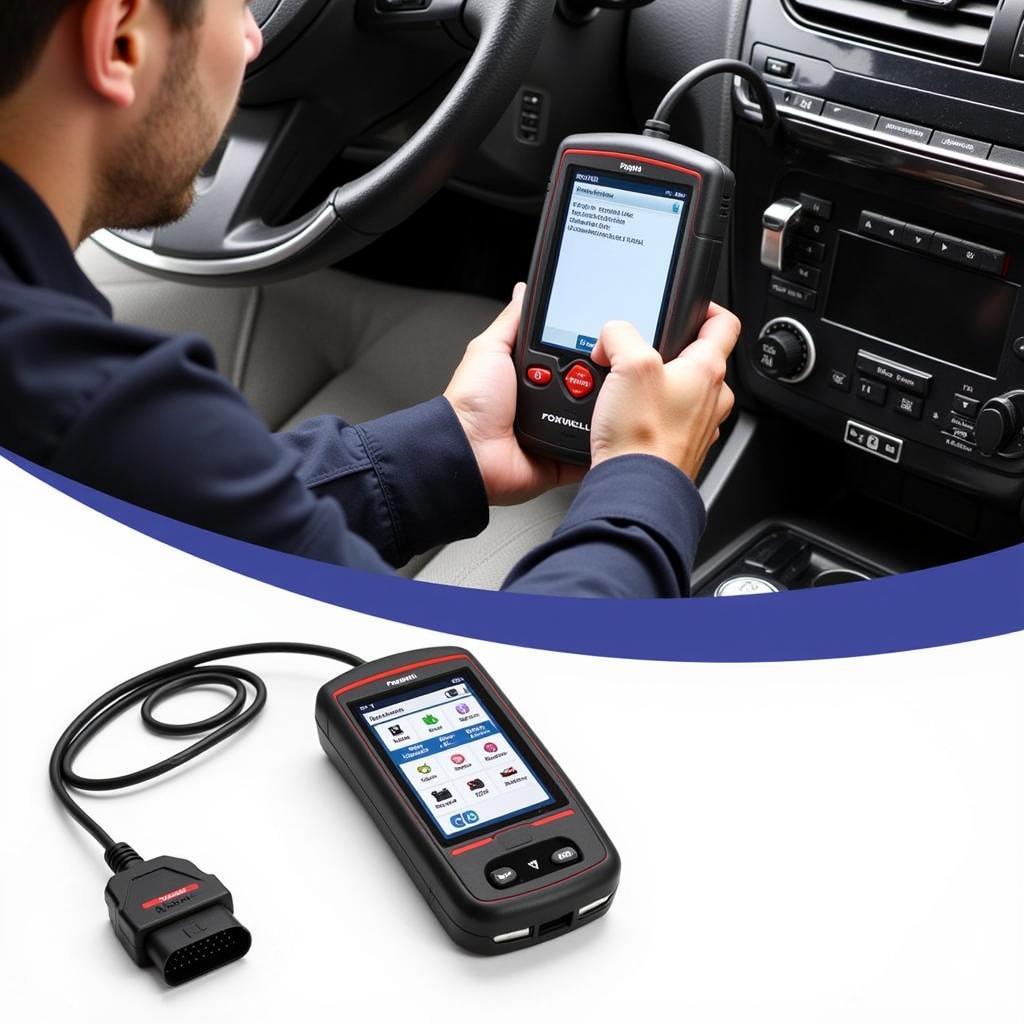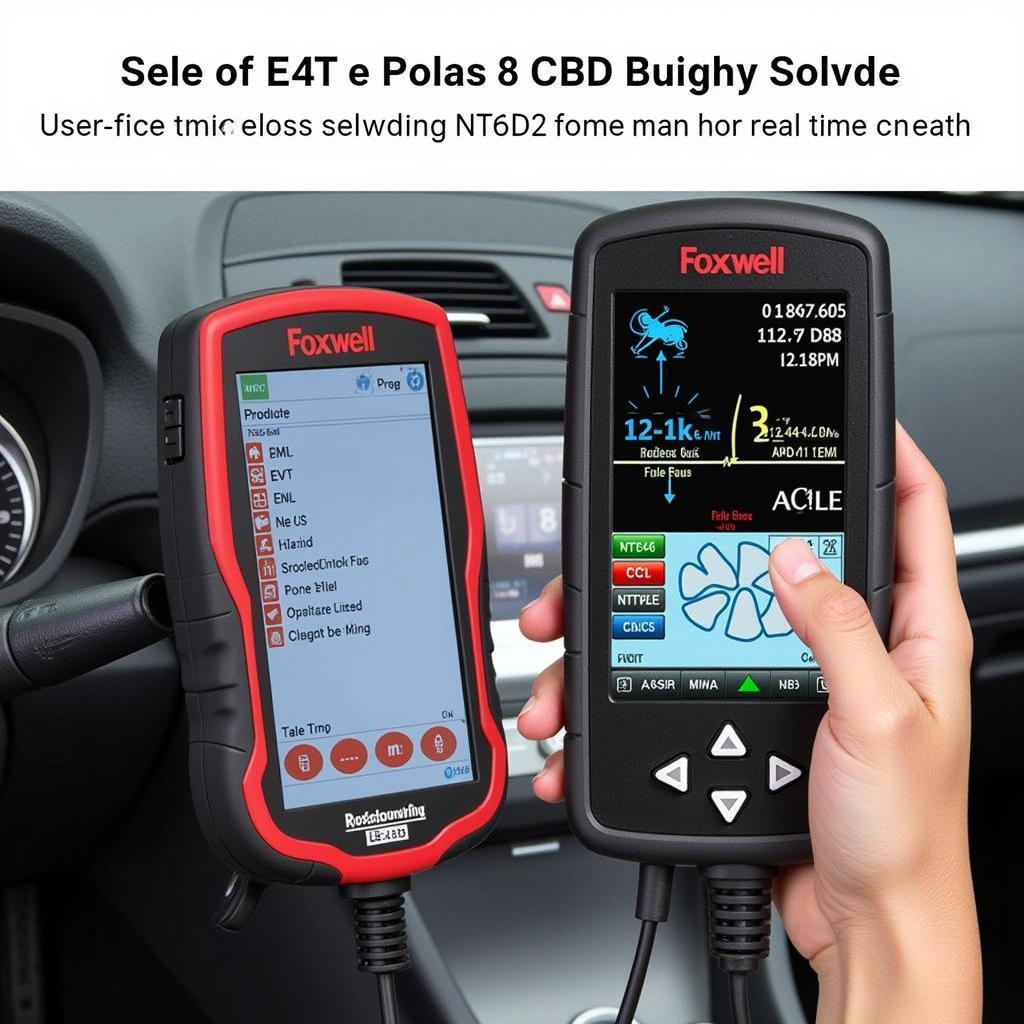A Foxwell OBD2 scanner is an invaluable tool for any car owner or mechanic. It can help you quickly diagnose and troubleshoot car problems, saving you time and money. In this comprehensive guide, we’ll walk you through everything you need to know about How To Use A Foxwell Obd2 Scanner, from understanding its basic functions to interpreting error codes.
Understanding Your Foxwell OBD2 Scanner
Before diving into the how-to, it’s helpful to understand what a Foxwell OBD2 scanner does. It acts as a window into your car’s computer system, allowing you to:
- Read and Clear Diagnostic Trouble Codes (DTCs): These codes are triggered when your car’s computer detects an issue.
- View Live Data Stream: This displays real-time information from your car’s sensors, such as engine RPM, coolant temperature, and oxygen sensor readings.
- Perform Advanced Functions (model-dependent): This might include ABS bleeding, airbag system resets, or transmission service functions.
Locating Your Car’s OBD2 Port
The OBD2 port is typically located under the dashboard on the driver’s side, often near the steering column. It’s a rectangular, 16-pin connector. If you can’t find it, refer to your car’s owner’s manual.
Connecting the Scanner
- Turn off your car’s ignition.
- Plug the Foxwell scanner’s connector into the OBD2 port.
- Turn the ignition on, but don’t start the engine.
- Turn on your Foxwell scanner. The scanner will usually power on automatically when it detects a connection.
Navigating the Menu
Foxwell scanners have a user-friendly interface. You can navigate through the menu using the arrow keys, enter button, and other function keys. Familiarize yourself with the buttons and their functions, which are often labeled clearly on the device.
Reading and Clearing Diagnostic Trouble Codes (DTCs)
- Select “Diagnostic Trouble Codes” or a similar option from the main menu.
- Choose “Read Codes” to retrieve the stored DTCs.
- Jot down the codes displayed. Each code corresponds to a specific issue within your car’s systems.
- Use a resource like the ScanToolUS website or a reliable online database to understand what each code means. Don’t panic if you see a long list—some codes may be historic and not indicate a current problem.
- Once you’ve addressed the issue related to a specific code, you can clear the codes from the system. Select “Clear Codes” or “Erase Codes” from the menu.
Pro Tip: It’s a good practice to clear codes after every repair to ensure that the issue has been resolved.
Viewing Live Data
Live data can help you pinpoint the root cause of a problem.
- From the main menu, select “Live Data” or a similar option.
- You’ll see a list of parameters that you can monitor. This might include engine RPM, vehicle speed, coolant temperature, oxygen sensor readings, and more.
- Select the parameters you want to view. You can often choose to display multiple parameters simultaneously.
- Observe the values as you drive or perform specific actions. This can help you identify sensor malfunctions, vacuum leaks, or other issues.
how to use foxwell obd2 scanner
Performing Advanced Functions
Some Foxwell scanners offer advanced functions, such as:
- ABS Bleeding: This helps remove air from the ABS system after brake work.
- Airbag System Reset: This resets the airbag control module after deployment or a minor collision.
- Transmission Service Functions: This might include resetting transmission adaptations or performing fluid level checks.
Note: The availability of advanced functions varies depending on the Foxwell scanner model and the make and model of your car. Refer to the user manual for your specific scanner model for detailed instructions.
Tips for Using a Foxwell OBD2 Scanner Effectively
- Invest in a quality scanner: Foxwell NT510 used options can be a good value for the features they offer.
- Understand its limitations: OBD2 scanners can’t diagnose every problem. Some issues may require a professional mechanic’s diagnosis.
- Keep the scanner software up to date: Updates often include new features, bug fixes, and expanded vehicle coverage.
- Consult the user manual: When in doubt, always refer to the user manual for specific instructions related to your scanner model.
- Use a reputable code database: Make sure you are using a reliable source to interpret DTCs.
 Foxwell OBD2 Scanner Advanced Functions
Foxwell OBD2 Scanner Advanced Functions
Conclusion
Mastering the use of a Foxwell OBD2 scanner empowers you to take control of your car maintenance and repairs. By understanding its basic functions and how to interpret the information it provides, you can save yourself time, money, and unnecessary trips to the mechanic. However, it’s crucial to remember that while a scanner is a powerful diagnostic tool, it shouldn’t replace the expertise of a qualified mechanic when dealing with complex issues.
Need help choosing the right Foxwell scanner? Not sure which model suits your needs best? Contact ScanToolUS at +1 (641) 206-8880 or visit our office at 1615 S Laramie Ave, Cicero, IL 60804, USA. Our team of experts is here to help!
Frequently Asked Questions
1. Can I use a Foxwell OBD2 scanner on any car?
Foxwell scanners are compatible with most cars manufactured after 1996 that are OBD2 compliant. However, certain advanced functions may only be available for specific makes and models.
2. What is the difference between Foxwell NT624pro vs Foxwell 520pro?
The NT624pro and 520pro are both popular Foxwell scanners, but they offer different features and functionalities. The NT624pro generally has more advanced capabilities and wider vehicle coverage.
3. Can the Foxwell NT301 test the alternator?
While the NT301 can read and clear codes related to the charging system, it may not have the functionality to directly test the alternator.
4. How do I update my Foxwell scanner?
You can usually update your scanner by connecting it to a computer with an internet connection and downloading the latest software from the Foxwell website.
5. What is the difference between SeekOne vs Foxwell?
Both SeekOne and Foxwell make OBD2 scanners, but they differ in terms of price, features, and the target user. SeekOne scanners are often more budget-friendly and cater to DIYers, while Foxwell offers a broader range, including models with advanced features for professional use.



